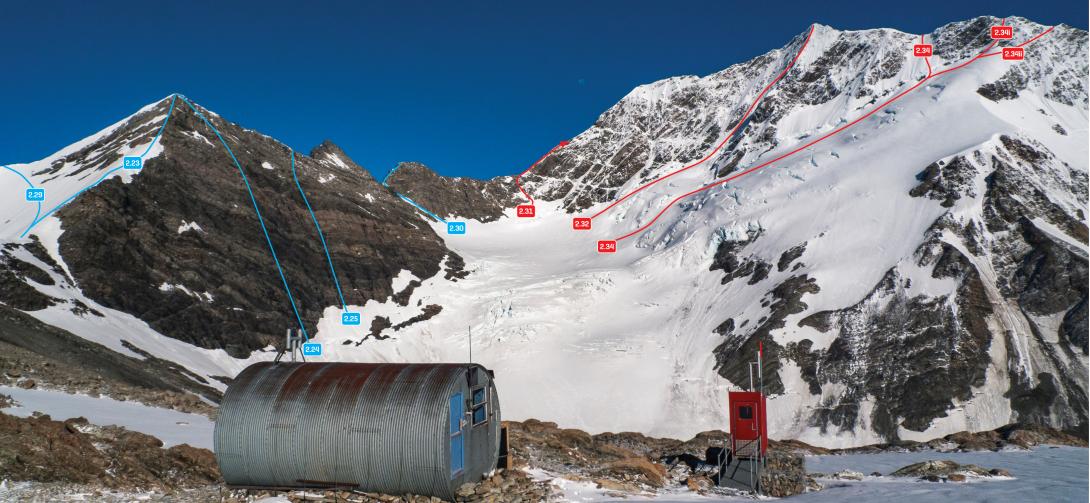Routes
| Reference | Title | Grade | Length | Pro | Quality | Alert | Operations |
|---|---|---|---|---|---|---|---|
| 2.31 | 2.31South West Ridge, IV,3 | IV,3 | 0m | ||||
|
From the Welchman Glacier, gain the ridge about 300–400m north of Watch Tower via a short face climb. The upper ridge is complicated by slanting rock. The rock steps are best turned on the slabby western face. The eastern side tends to be rotten.
|
|||||||
| 2.32 | 2.32South Face, IV,3+ | IV,3+ | 0m | ||||
|
From the Welchman Glacier, ascend the obvious ramp that angles from left to right directly under the summit. Finish up the rock rib to the summit. Another rock rib further right has also been used.
|
|||||||
| 2.33 | 2.33Bernard Col Route, III,2 | III,2 | 0m | ||||
|
From the Welchman Glacier, gain the Main Divide at Bernard Col or one of the options further north (crux, technical grade 4). Then either follow the Main Divide to the summit, or drop down onto the western slopes and climb the top of the north–west ridge. The technical grade is from Bernard Col.
|
|||||||
| McKerrow Face, 2+ | 2+ | 0m | |||||
|
Mt Burns is the highest peak between Mts Sefton and Aspiring. Beginning from
|
|||||||
| North- West Ridge | 0m | ||||||
We’d expected the serrated rock crest of the upper ridge – with three prominent steps – to be the crux of the route, but just below the first rock step we discovered a snow slope on the north side of the ridge which appeared to offer an easy route all the way around the rock steps. This was partly disappointing, as the ridge crest itself would have made an impressive climb. A nor’wester was forecast to develop that afternoon however, so we decided to take the fast route and abseiled 20 metres onto the snow slope. |
|||||||
